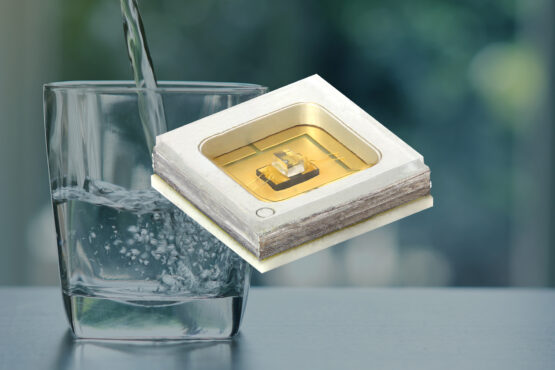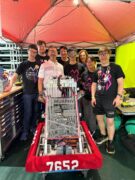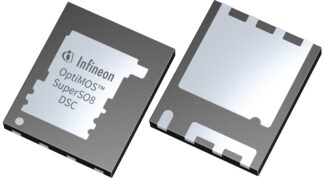By Markus Lorenz, Director, Industry Marketing, Industrial Europe, TTI, Inc.
Covid pandemic introduces different smart building priorities
Smart buildings are nothing new. The term is broadly applied to a wide range of office, retail and public buildings where sensors and electronic control systems manage everything from lighting, heating and ventilation, and security. Smart buildings, already a significant market worth billions of Euros, also include smart homes; a growing market for consumer IoT devices. The concept that smart automation systems can manage the workspace environment more efficiently and effectively brings many benefits. Not only does this approach bring direct cost savings, such as not lighting and heating unoccupied rooms, but it also makes the building more comfortable to work in and environmentally friendly. Coupled with modern fabrics, ergonomic furniture, and flexible workspace layouts, workers feel more positive and become more productive.
The COVID-19 pandemic has changed everything. While lockdown conditions worldwide have led to many vacant offices, there are still plenty of occupations that cannot be done from home. Workers need to access office facilities to keep essential business services running. As we emerge from lockdown, many office-based staff crave to return to office life’s routine and socially engaging aspects. Within retail, from coffee shops to supermarkets, cinemas to stadiums, keeping businesses running and returning to a ‘new normal’ is vital.
Keeping everyone safe from the risk of COVID-19 infection is now the top priority for smart buildings.
Controlling access to buildings
Buildings can be kept free of infection by implementing several forms of access control. The scope of control ranges from limiting the numbers of people in a building at any time, something we probably have all experienced at supermarkets, and measuring everyone’s temperature entering the building. Controlling access can also be achieved via automated facial recognition and touch-free security methods.
Limiting the numbers of people in a building
For buildings where there is usually a free-flow of people, coffee-shops and supermarkets, for example, keeping the number of persons inside any one time is crucial. By limiting the number of shoppers allows more space to socially-distance from others. Local and national restrictions vary in terms of the number of customers allowed within a defined area. There are several ways to achieve this automatically. Simple optical entrance and exit counters can provide a running tally of shopper numbers. A more accurate method can use visual sensors to detect individual persons entering and exiting the store without any recognition and data privacy implications.
Measuring temperatures
Since the initial outbreak of COVID-19, a person’s temperature has been a reliable method of determining if they have the virus. While it does not isolate those that are asymptomatic, it does serve to restrict those who present with the virus. Temperature measurement sensors can become part of existing access control systems to prohibit access to any person indicating a high temperature. For example, infra-red sensors are well suited to this application and can accurately measure a person’s forehead temperature from a short distance. No physical contact with the person’s forehead is required. These access control methods are ideal for deployment in large public facilities such as government offices and sports venues.
Figure 1 – a proposed image of temperature checking – from Omron presentation?
Implementing facial recognition
Access control methods that use cameras and machine learning algorithms to identify an individual can also be employed to grant authorised individuals access. Primarily used for company employees, regional data protection law varies with granting access in this way. Any access control system that can be used without touching a keypad or screen has become vital to limit spreading COVID-19. Touchless screens that operate based on in-air gestures and finger-tracking keypads are fast gaining in adoption as organisations work hard to make their smart buildings safe for employees.
Checking that an employee is wearing a face covering, another crucial factor in preventing the virus’s spread is possible using vision-based machine learning algorithms.
Controlling the spread of infection within smart buildings
Once inside a building, whether an office or retail outlet, what steps can be taken to maintain a safe environment? Firstly, air cleaning and purification sensors such as CO2, often already integrated within fire detection sensors, can give a meaningful air quality perspective. As we have learnt from airlines’ methods to maintain air quality inside aircraft, filters, forced airflow, and external air inputs contribute to cleaning and purifying the air, making it safe for passengers.
We can employ a similar approach in a smart building. Air quality and contaminant sensors coupled with air conditioning plant, window openers, and ventilation controls, can maintain the optimal air quality and airflow levels to minimise the spread of infection.
UVC light crucial to disinfect air, surfaces and floors
COVID-19 has also encouraged the broad adoption of ultraviolet ‘C’ (UVC) light for air sterilisation. Already regularly used in surgical autoclaves, LED UVC emitters serve to disinfect items and the surrounding air.
Figure 2 – LED UVC lighting – can we obtain an application-centric image from Vishay? (not a product shot or line drawing)
Unfortunately, UVC light causes harm to human skin so it is not suitable for direct or overhead lighting. However, UVC light can be used within air purification units and air filters built into combined office lighting and air circulation units. Cleaning robots using UVC are already available for cleaning office, retail and hospital floors. Smaller UVC light sources built into ATMs and retail POS cashdesks tills keep coins and banknotes disinfected.
Figure 3 – Better resolution image of a Caereo shine system?
Reducing COVID-19 risks outside the workplace
With the emphasis on providing a low infection risk, smart building experience, the use of touchless controls for doors, toilets, lighting and elevators has become paramount. Fully integrated units using gestures, proximity detection, temperature detection, and face recognition will become the norm.
The same applies to our interaction with all facilities, whether in the workplace, entertainment venues or retail outlets. Avoiding touching surfaces, picking up and replacing items, or being closer than the defined social distance is critical. An integrated approach to maintaining safe distancing, disinfection, touchless controls, and machine vision applications is the way not only to beat this pandemic. Putting such technology in place now is the way to ensure future viruses do not spread as COVID-19 has.
Smart building technologies continue to evolve
COVID-19 has momentarily shifted the emphasis from the comfort and environmental factors to reducing infection risk and employee safety. Moving forward, they will all become an integral part of any smart building.
With an increasing array of technology employed, the energy efficiency of smart buildings will remain vital. Occupant comfort factors combine with energy efficiency for trends such as human-centric lighting (HCL), where the spectrum of individual workspace lighting matches that of the sun. The benefits of HCL aids bringing the ambient lighting to match an individual’s circadian rhythm, improving concentration, energy, and productivity.
Other smart building technology trends, for example, in the smart home, can track individuals’ heat and light preferences, so that when they enter the defined rooms, the levels are adjusted accordingly. Machine learning algorithms running on edge sensor devices, the so-called ‘inference at the edge’, is a perfect example of a low-power, energy-saving IoT deployment.
As we emerge from lockdown conditions and commence working in offices again, smart buildings will not only be comfortable and productive places to work, but will ensure we are safe and secure from the risk of infections.









